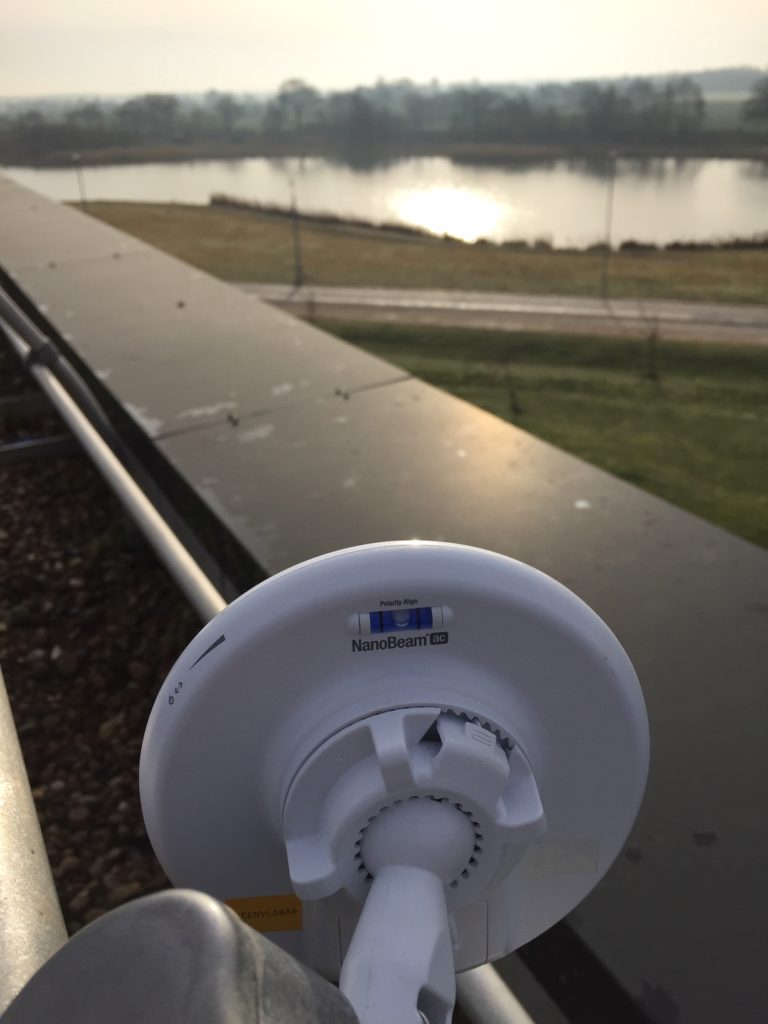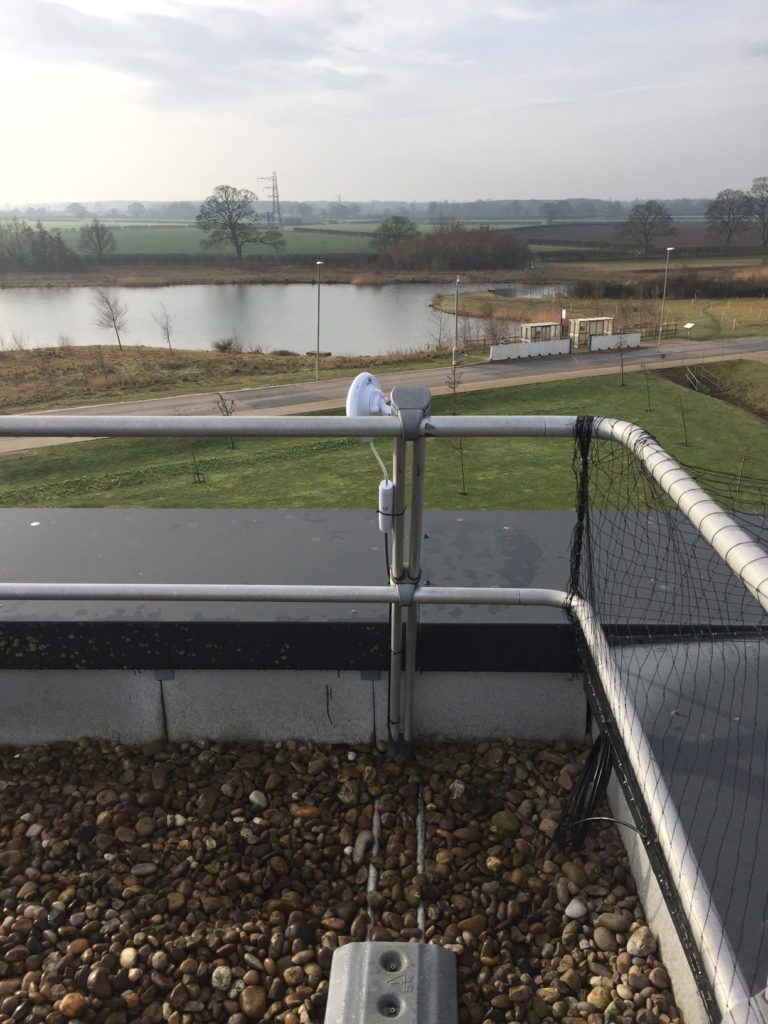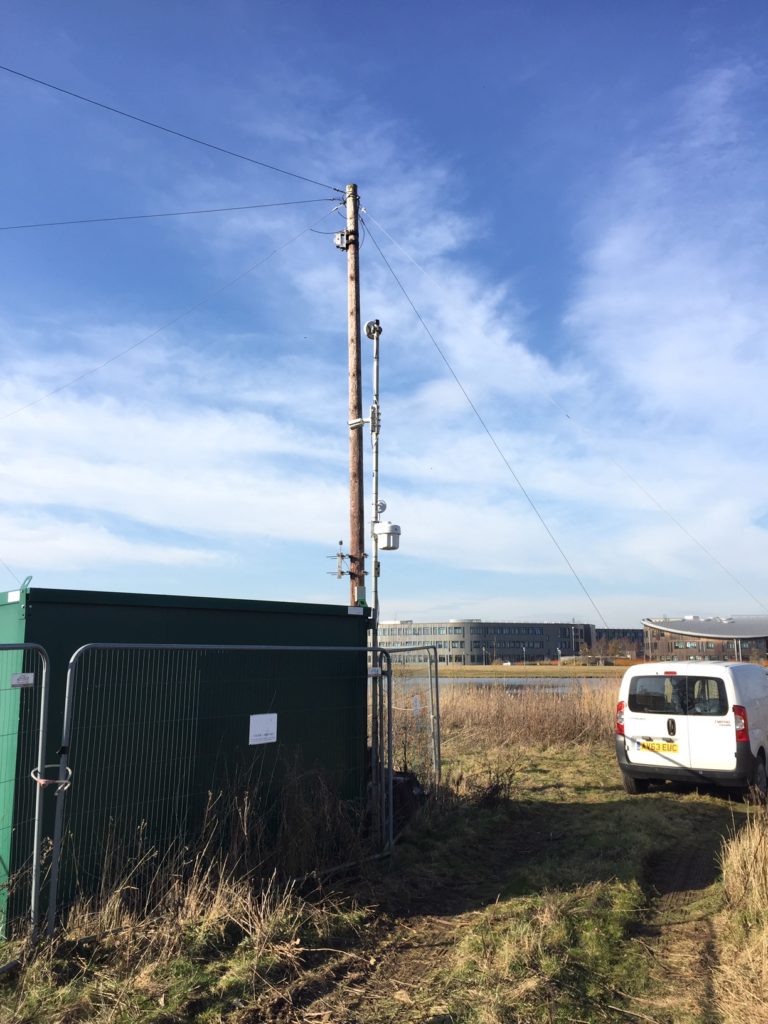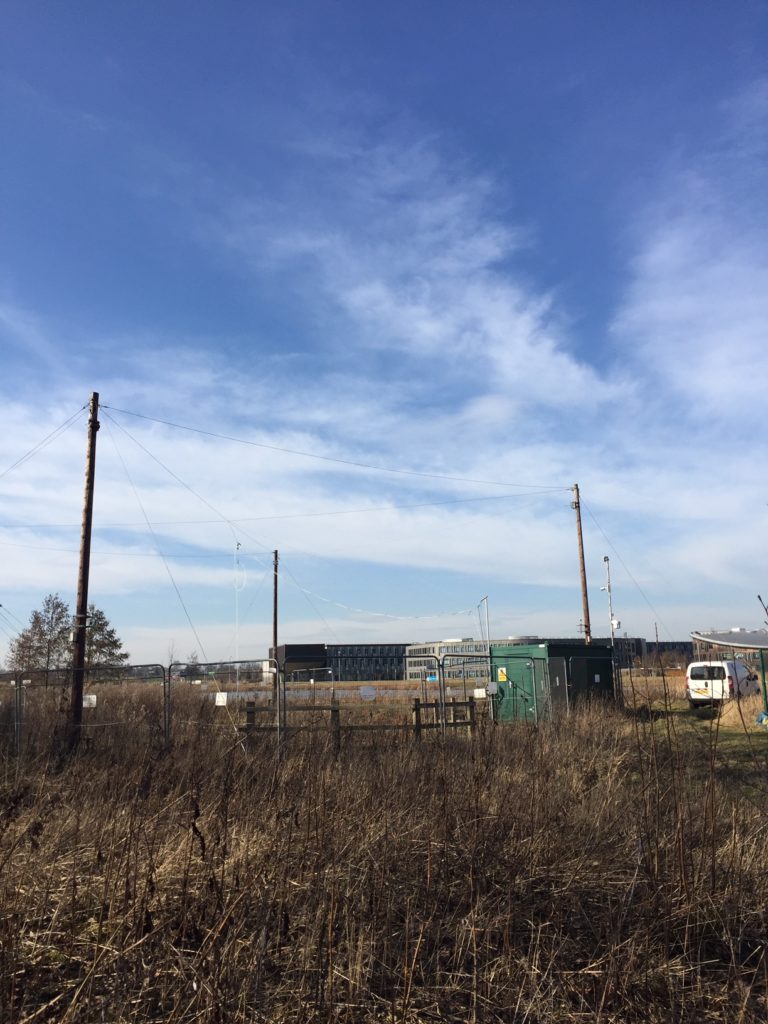Situated across the lake, next to a lane that borders some fields, is the outdoor lab site of an ecology project researching moorland management. Fascinating in itself, the team tending a very strange allotment sized plot of land are recording data and processing e-mails while literally in the field.
The site is over 300m away from the nearest external Wi-Fi AP in that part of campus and despite the distance the 2.4GHz band is surprisingly usable providing you stand in just the right place and hold your laptop aloft. Because it nearly works the initial proposal from users was to try building a DIY antenna out of kitchenware and a high power USB wireless nic of dubious legality.
I recommended against this and instead have been able to setup an Aruba AP-275 linked back to the campus network with a point to point wireless bridge.
The wireless bridge in question is a pair of Ubiquiti Networks Nanobeam AC, part of the company’s Airmax range of products. This is the first time I’ve used any Ubiquiti gear on campus but I’ve long been a fan of what can be done for a really modest outlay using the Ubiquiti equipment.
Ubiquiti gets a bad rap among wireless geeks. There’s good reason for this. It’s pretty cheap and their Unifi managed WiFi offering has long lacked features that would really qualify it to be truly ‘Enterprise’. The Airmax gear is also inexpensive, built to a price and, frankly, it can look a bit flimsy. Next to the Aruba AP-270 series the Nanobeam looks almost comical in its lack of weather sealing. However, I put a pair of a previous generation Nanobridge M5 devices up, somewhere in the wilds of North Yorkshire several years ago, and have never had to touch them since. Wireless ISPs like Beeline Broadband have been using affordable gear from Ubiquiti and Mikrotik for years to bring broadband to areas that otherwise end up with DSL speeds little faster than dialup.
I think one of the reasons this gear gets a bad name is the way it’s sometimes used. Ubiquiti make some high gain antennas and it’s very easy to significantly exceed the power levels permitted in a regulatory domain. I’ve come across badly installed, poorly aimed radios where the country has been set to whichever would let the installer turn the power up to a metaphorical 11 (but probably higher than that). Because the equipment is inexpensive and accessible this is probably not a great surprise. There have also been some firmware shockers too, but again bad practices have left radios running in the wild with critically vulnerable firmware.
The Airmax gear may not be engineered like our Aruba external APs but it’s affordable, functional, can certainly be reliable and I have to say it’s a joy to use with a really nice user interface. Ubiquiti also make a management server available called UNMS. It’s still in beta, but it does a good job of providing a single pane of glass for seeing the network status and managing Airmax radios.
The relatively short link distance (indicated 280metres) means the Nanobeams can achieve 256QAM to provide 150Mbps throughput with a 20MHz channel width. It may be a distance that WISP engineers would laugh at… but it’s been a useful problem solver and the hardware cost under £200.

AP on the most convenient building 
AP end of the PTP bridge 
Remote site 
The remote site